Mehndi is a temporary form of body art or skin decoration that has been practiced for thousands of years in places like the Middle East and India. Mehndi is traditionally drawn in delicate, elaborate, and elegant patterns on the hands and feet of women created from the powdered dry leaves of the henna plant (Lawsonia inermis). It is used for any festival or occasion such as Indian engagements, weddings, and festivals like Karva Chauth, Deepawali, Bhai Dooj, Navarathri, Durga Pooja, Eid, and Teej.
Originally, a dot was placed as mehndi on the palms of the hands of the mehndi users to help cool the body. After growing tired of the look of a single dot on their palm, they began to add lines and other shapes. This elaboration eventually resulted in the lovely designs we see today.
Whether you are getting married, celebrating a special occasion, or just want to add some extra beauty to your hands, you will find a design here that will suit you perfectly. Keep scrolling further for some exotic designs.
Read: 40+ Simple Mehndi Designs for All
Table of Contents
Why is Mehndi So Popular?
Mehndi, also known as henna, is a type of body art that is growing in popularity all over the world. But what is it about mehndi that has so many people falling in love with it?
There are a few reasons why mehndi is so popular. Mehndi is associated with good luck and positive spirits. Firstly, mehndi is incredibly versatile. It can be used for any occasion, from a party to a wedding. Secondly, mehndi is incredibly beautiful. The intricate designs can turn any hand into a work of art. And lastly, mehndi is really fun to apply. It’s a great way to add a bit of personality to any outfit.
Mehndi designs have played a significant role in marking every milestone from adolescence to adulthood. Every occasion, wedding, and festive ceremony or offering in Indian families is marked by the application of mehndi to our hands. Wearing mehndi has become a symbol of ‘solah shringar’ in Indian women over time, and it has always been crowned as an ‘auspicious mark’ to celebrate traditions or a new beginning.
The Meaning of Different Mehndi Designs
Ganpati Mehndi Designs
Ganesh Chaturthi is one of India’s most vibrant and auspicious festivals. Worshipping Lord Ganesha has a special meaning. Lord Ganesha, also known as ‘Vighnaharta’, is revered as the giver of happiness and prosperity (Riddhi – Siddhi) and He has the power to liberate his devotees from distress, poverty, and diseases.
Ganpati mehndi designs are an important part of personal preference and style when it comes to decorating the hands for festivals and special occasions. Ganesh Puja is regarded as the ideal starting point for all new beginnings. Why not have Ganpati mehndi designs for festivals or when getting married?
Lord Ganesha sitting peacefully on the palm as a henna design produces a one-of-a-kind effect. The dazzling color of mehndi with beautiful patterns looks even lovelier with the Ganpati motif giving an aesthetic appeal to the hands.
There are hundreds of Ganpati mehndi designs that make women excited about the festival and apply the Mehndi designs to their hands. Here are some exclusive and stunning Ganpati mehndi designs for you to try out.




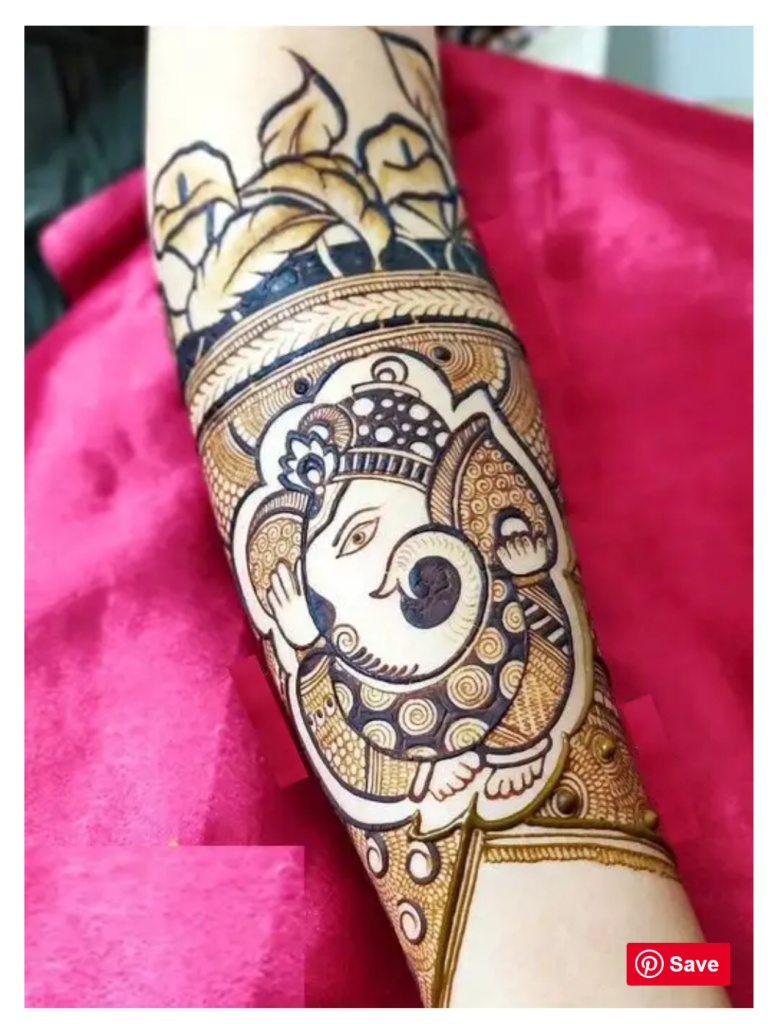

Indo-Western Mehndi Designs
The Indo western mehndi design is a combination of the east and west. Many trends come and go, but mehndi is one such design that has only recently reached its pinnacle in the fashion world. Many Western countries have also adopted this style called “henna tattoos.”
Many classic Indo-western mehndi designs have emerged as a result, which is a fusion of traditional Indian elements combined with western, and modernistic motifs for a unique look. These mehndi designs are quite spaced out and incorporate both modern and traditional Indian patterns.
If you’re looking for something interesting, fun, and unique, these trendy Indo-western mehndi designs are certainly the ones for you.




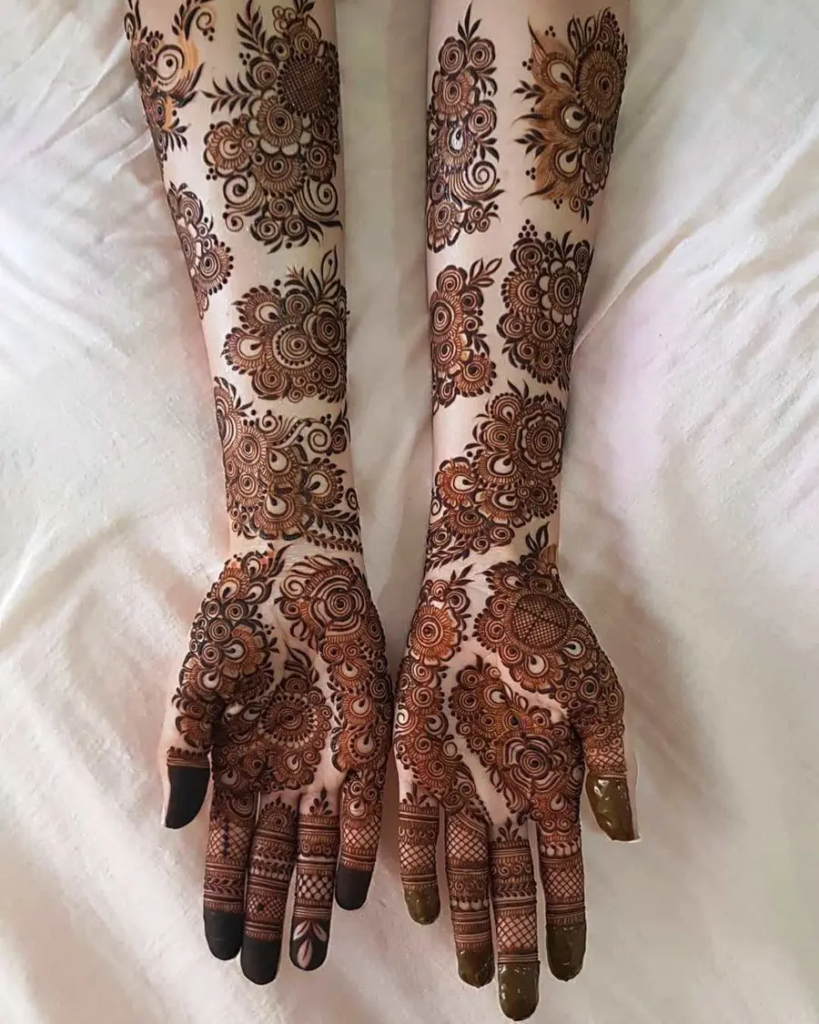
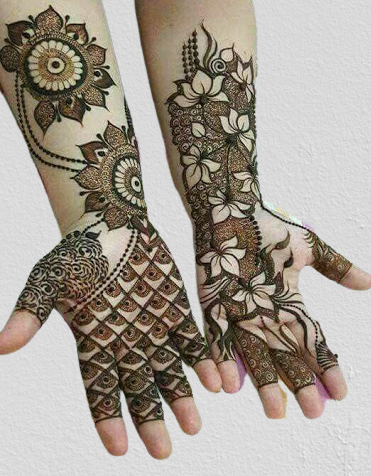

Some Classic Mehndi Designs
From Amitabh Bachchan to Ranveer Singh today, Bollywood and Mehndi are inextricably linked. Wedding scenes are the most common in movies, and mehndi is a lovely addition to them. With wedding season approaching, you might want to be a bride’s best friend, or if your sibling is getting married, the excitement will be palpable. Here are some examples of gorgeous classic mehndi designs that you could use for the mehndi function.
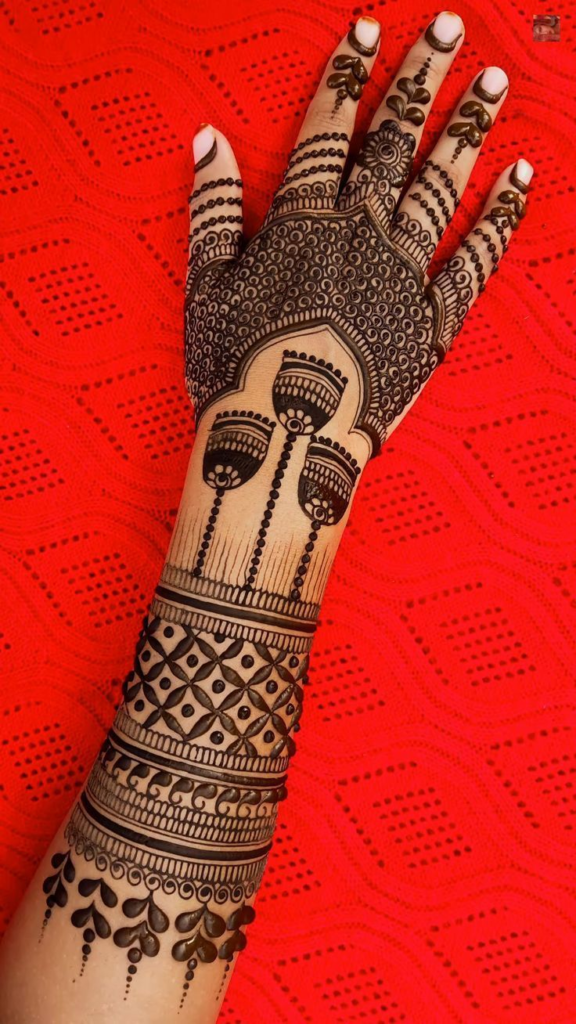






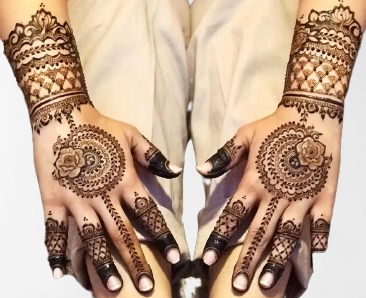
Marwari Dulhan Mehndi Designs
Another popular mehndi design is the Marwari Dulhan Mehndi design. Dulhan is Hindi for “bride,” so this pattern is perfect for special occasions like weddings. It is thought to bring good luck to the bride and her new family.
Marwari Mehndi is a distinguishable style of mehndi that emphasizes fine detailing. Thin mehndi strokes are skillfully drawn onto hands or legs, combining to form one large doodle. Because of the amount of detail involved, these small, traditional mehndi designs are very prominent throughout the Indian subcontinent.
Marwari mehndi is a genuine form of traditional mehndi from Rajasthan, one of the culturally rich states in India. Marwari mehndi’s intricate, thin strokes create traditional motifs like elephants, lotuses, and peacocks and designs and patterns such as horses, dulha-dulhan, palanquins, flora and fauna, and other delicate, yet royal patterns.
Some of the Common Motifs in Marwari Mehndi
1. Lotuses
Lotuses are one of the most famous and repetitive motifs in traditional Marwari mehndi designs. Even after growing in mud, it conveys the message of purity as a symbol.
2. Elephants
Elephants are among the majestic motifs featured in Marwari mehndi designs. Elephants, as a symbol, represent royalty and have been a symbol of Rajasthan’s regal lifestyle since ancient times. The elephant pattern is making a big splash in the wedding industry.
3. Peacocks
Another distinct motif borrowed from the Marwari style by almost all emerging mehndi styles is the representative Indian symbol of a peacock, also known as ‘Mor’ in Hindi.
The most common interpretation of this motif is that of immense beauty. The national symbol is one of the most powerful motifs, capable of transforming any henna pattern into an exceptional design. The fabulous bird, the peacock, is widely found in Rajasthan, and peacock bird motifs have found an important place in Marwari Mehndi’s design.
In contrast to Arabic patterns, Marwari mehndi does not use thick mehndi strokes. Thin detailed strokes that follow each other without any space in between create an artistic and aesthetically pleasing style. Aside from that, it doesn’t reveal much skin.
This wedding season, Marwari mehndi is the latest revival of the traditional mehndi punch, and below are some extraordinary styles of the Marwari Dulhan mehndi’s.

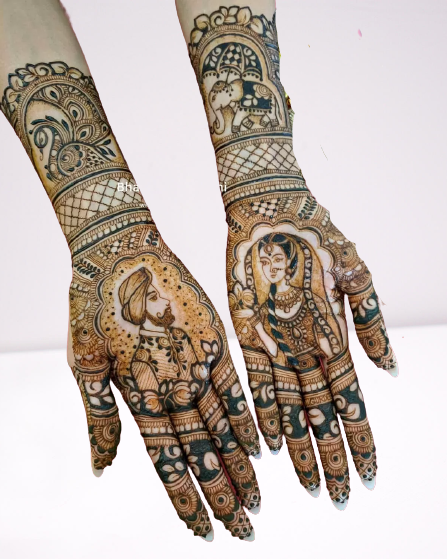
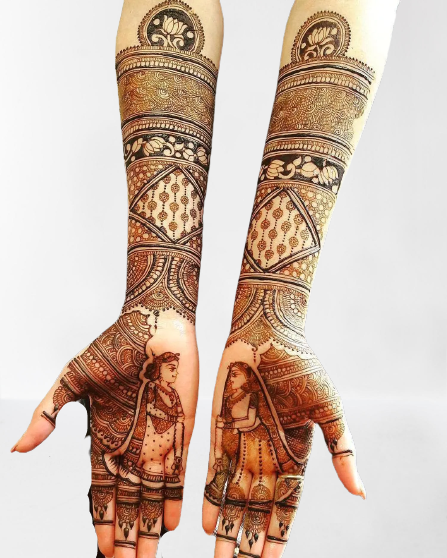
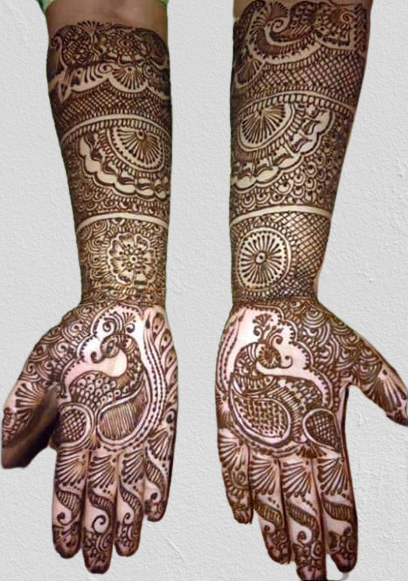
17 Latest Full Hand Mehndi Designs for Brides
Mehndi has great significance in all Indian wedding traditions. One of the most important and grand pre-wedding functions is the ‘Mehndi Ceremony’, also known as, mehndi-ki-raat. It’s pretty much similar to the ‘bachelorettes’ of the West, with all of the bride’s female relatives and friends gathering together to celebrate.
The mehndi dot is thought to be a symbolic blessing, bestowed upon the new daughter-in-law to allow her to beautify herself for the groom. It has nothing sacred or spiritual about it, but it is thought to be lucky, and beautiful. The designs adorn both the front and back of the hands, sometimes up to the elbows, and feet, and sometimes up to the knees too.
Brides are made to wait for the mehndi paste to dry and produce a dark and deep design. As the bride is forced to relax and wait for the paste to do its job properly, the entire process is therapeutic in terms of calming and preparing her for the event.
When it comes to mehndi, there’s nothing quite like a full-hand design to make you feel special. With so many intricate patterns and beautiful details, they’re the perfect way to show off your creativity and style.
Every bride wants to look her best on her wedding day. If you are looking for some inspiration for your next mehndi design, you have come to the right place.
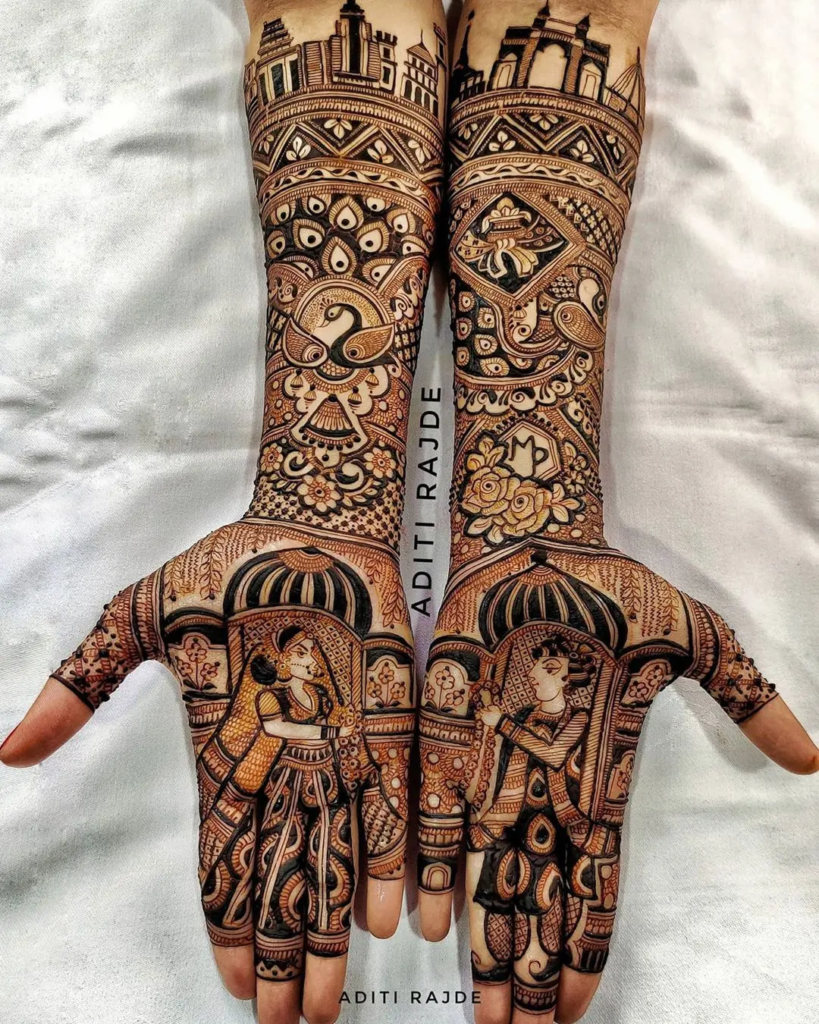

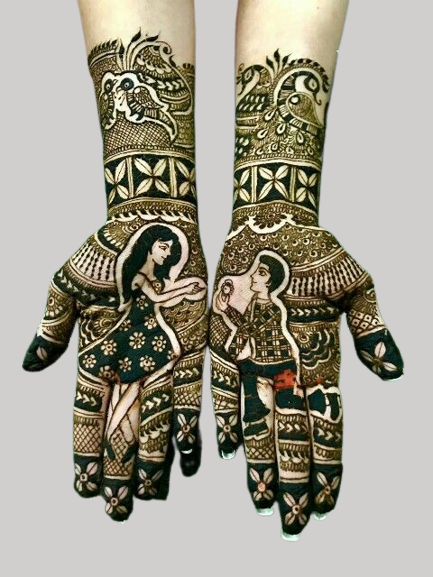
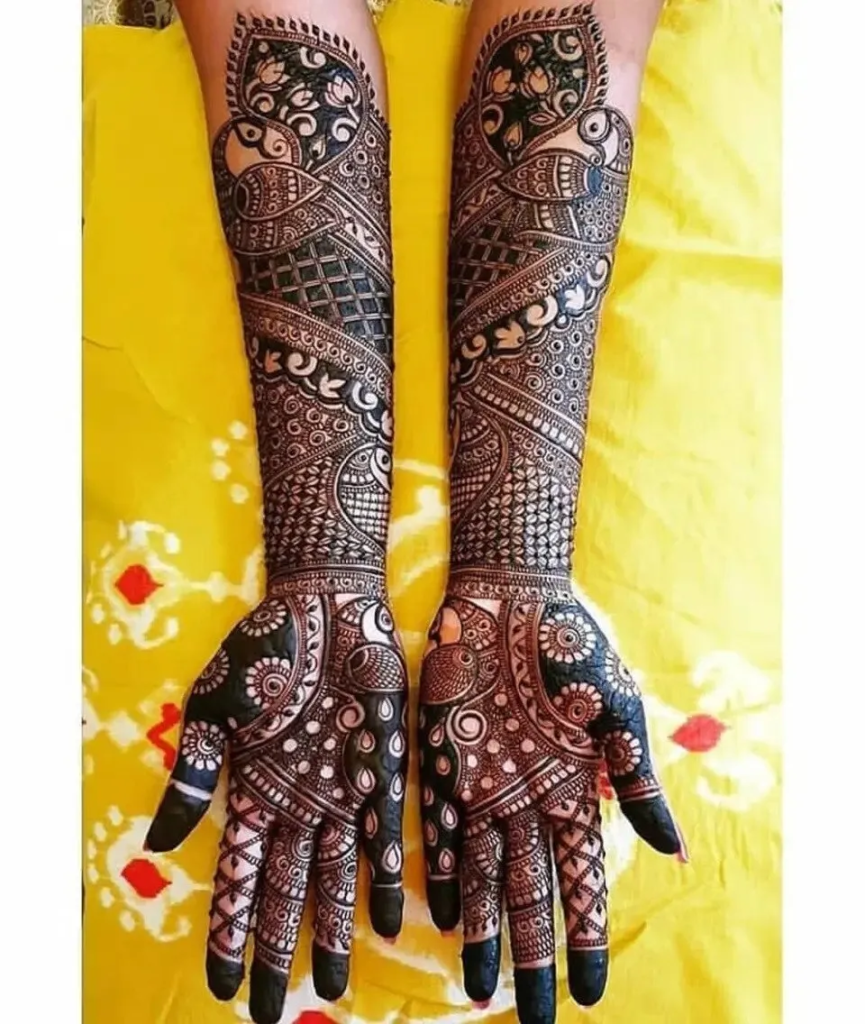
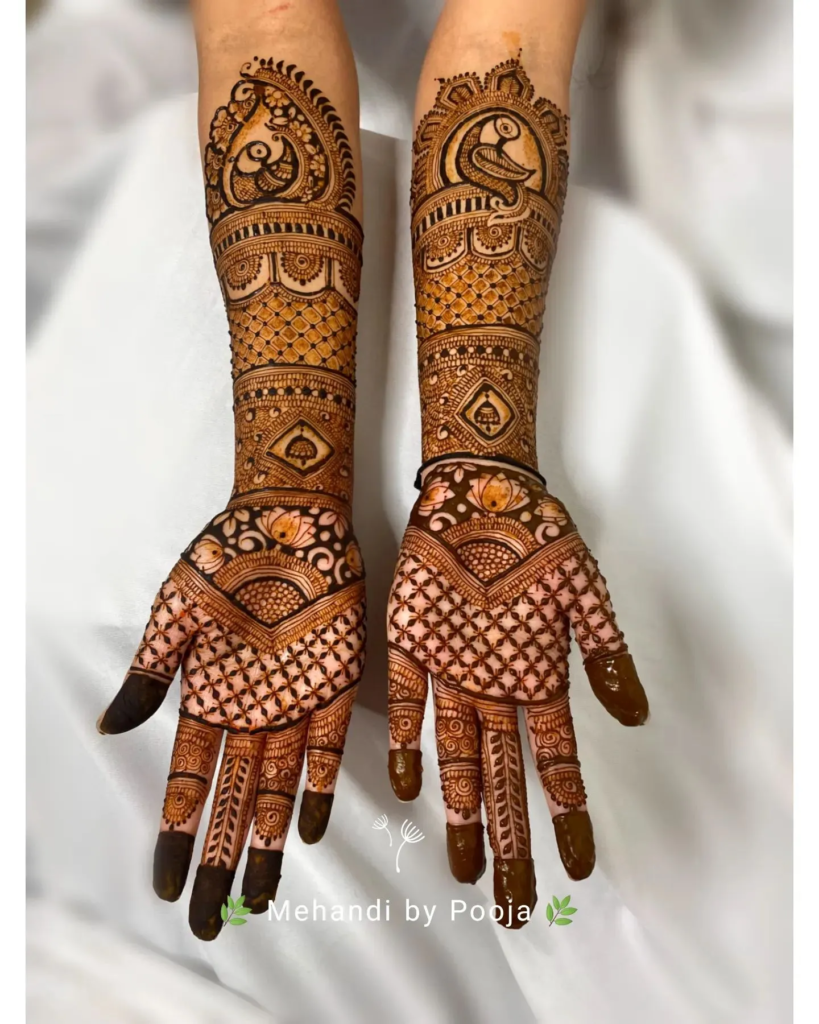
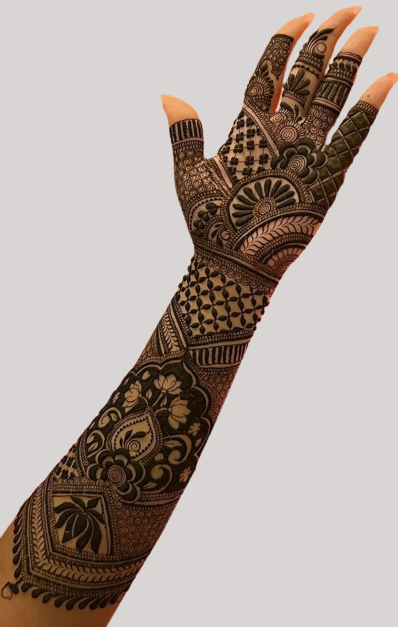
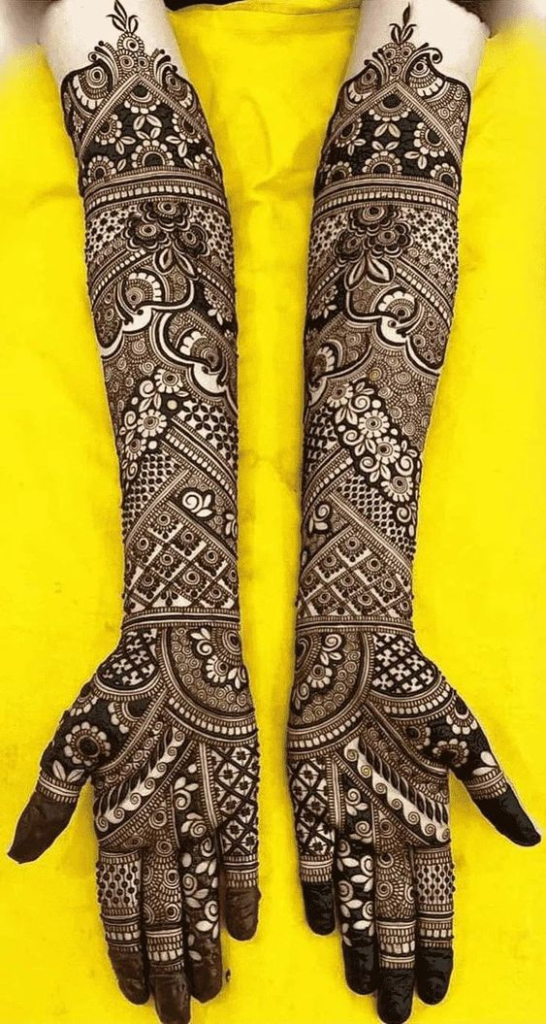
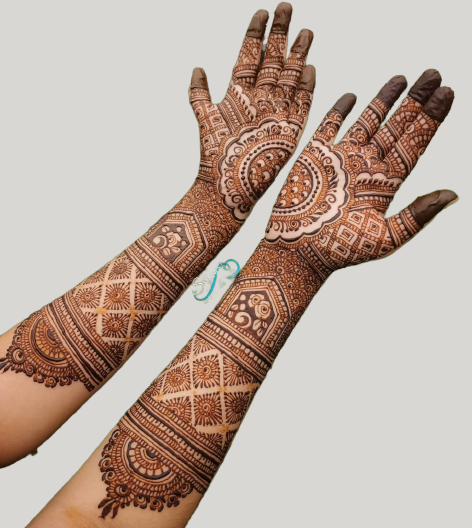
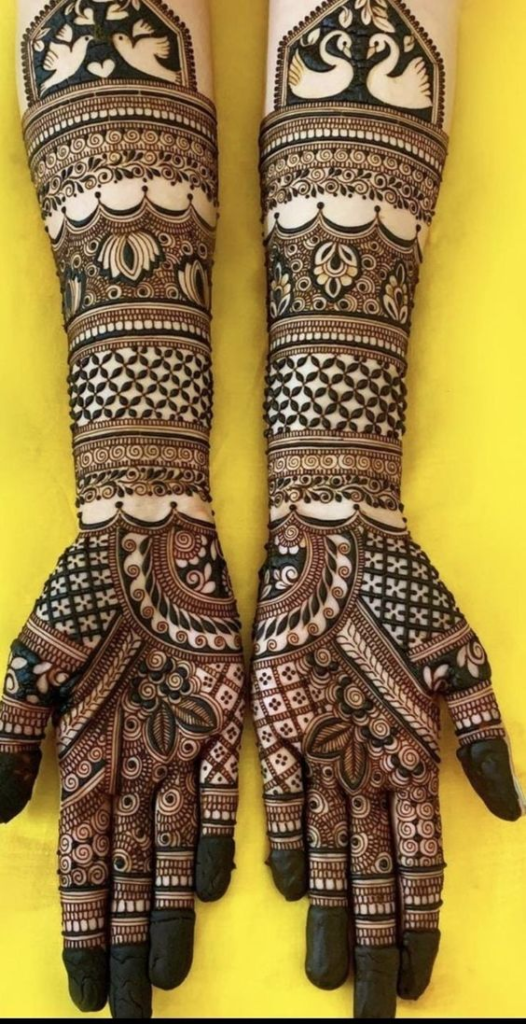

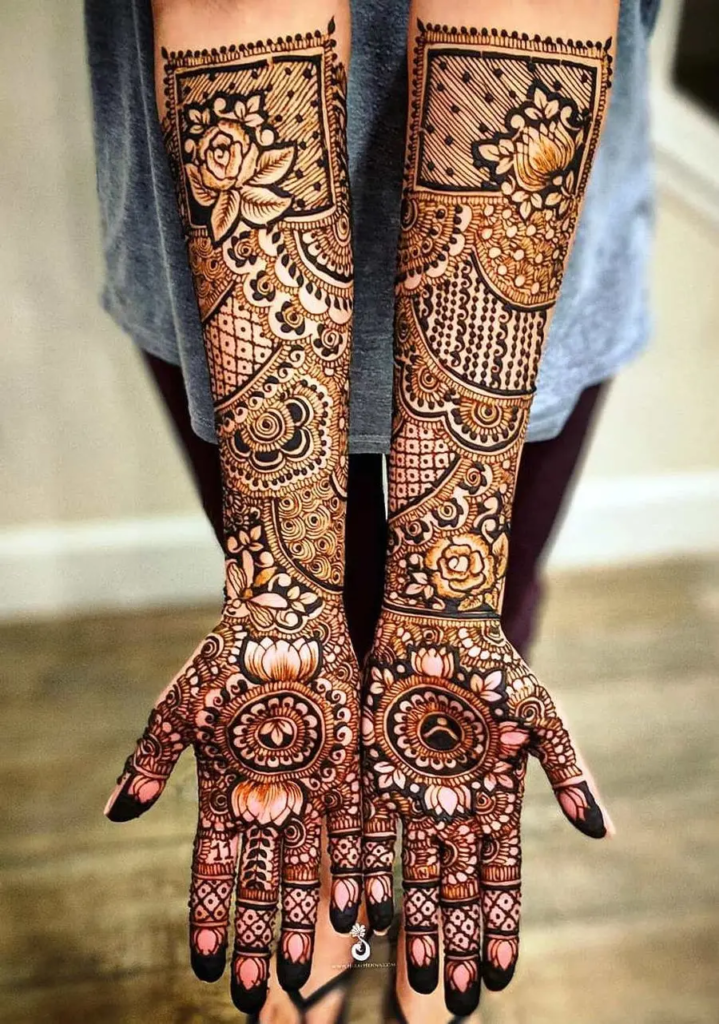


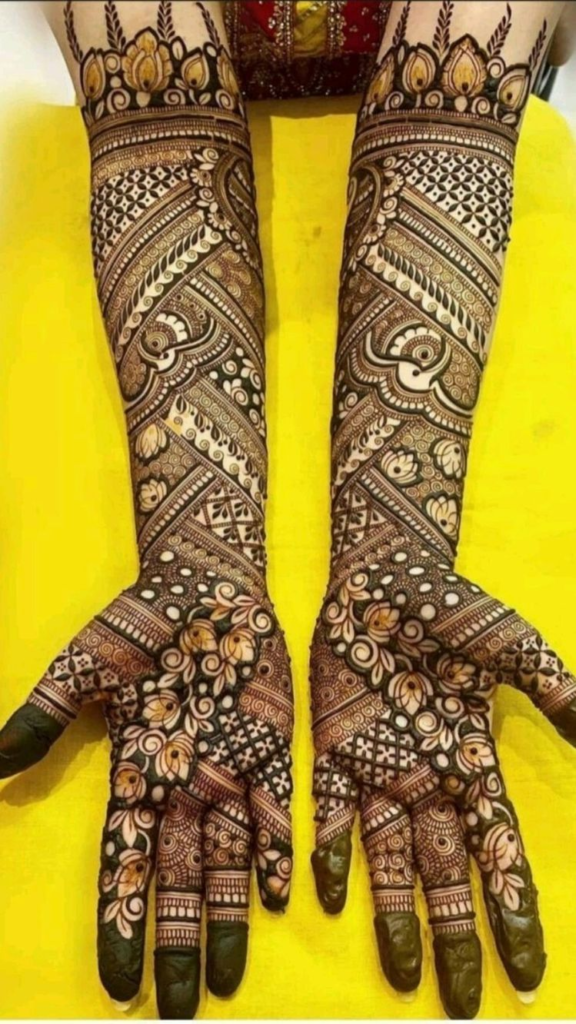

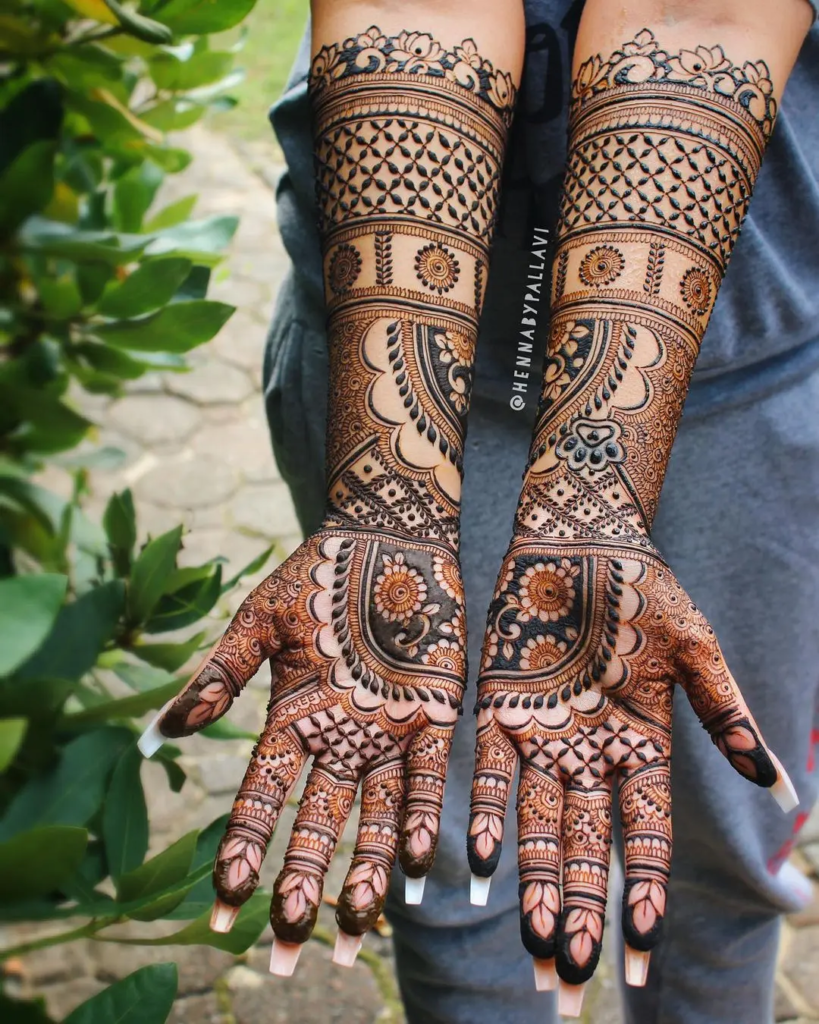
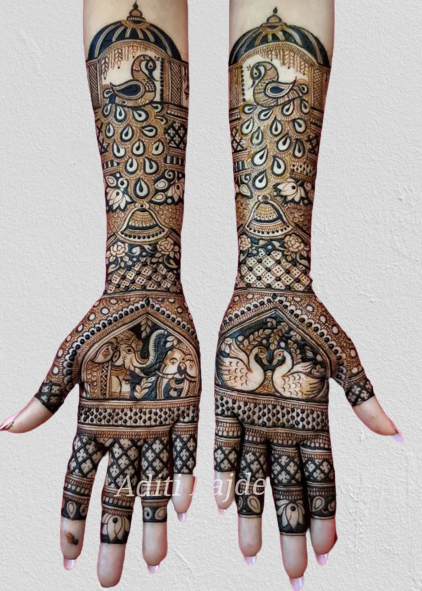
Stylish Full Hand Mehndi Designs
And finally, my personal favorite: the stylish full-hand mehndi design. This design is perfect for any occasion and can be adapted to suit your own style. It features a variety of intricate details and patterns, making it a real showstopper!
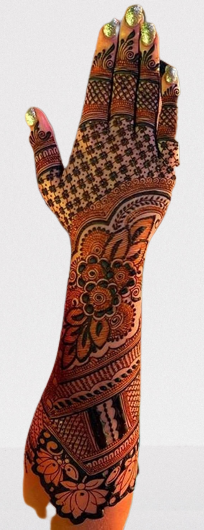



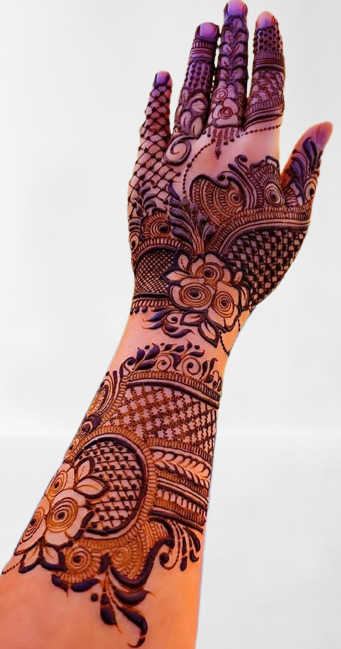
Frequently Asked Questions
1. What do you need to know before getting mehndi?
Before you get mehndi applied, there are a few things you need to know. Firstly, mehndi is a temporary form of art (tattoo) that will last for approximately ten days to two weeks maximum. However, it will gradually fade over time and eventually disappear altogether. Secondly, different parts of the body will hold mehndi dye differently, so be sure to discuss the design with your mehndi artist ahead of time.
And finally, keep in mind that mehndi is an art, and each design will be unique. So even if you see a design that you love online, you can request your mehndi artist to customize it for you.
Now that you know all about mehndi, let’s answer some of the most common questions people ask about this age-old art form.
2. How do you take care of your mehndi once it is applied?
Some tips to be followed for extra care of your mehndi are:
- Allow the mehndi paste to dry to the touch for about 20 minutes plus.
- Once the mehndi paste is dry, mix equal parts of lemon juice and sugar and spray the solution over it.
- Let the mehndi paste remain on your skin for 6 to 8 hours.
- Once dry, peel off the mehndi paste gently. Do not wash it.
- Try and avoid water for almost one full day.
- Apply Vaseline or coconut oil to your mehndi design before bathing. (Use a plastic bag or plastic gloves on your hands, if possible).
- By following these tips, you can ensure that your mehndi can last for a good 2 weeks with extra aftercare. Mehndi color comes out the best on your hands and feet because of high body heat in those areas.
Once your mehndi design is complete, it’s important to take care of it so it lasts as long as possible. Here are a few tips:
• Apply a thin layer of oil or moisturizer to your hands and mehndi design a few times a day. This will help keep the skin hydrated and the design looking fresh.
• Don’t use harsh soaps, detergents, or scrubbers when you wash your hands – they can damage the mehndi design and cause it to fade faster.
Conclusion
From classic motifs to contemporary designs, from elegant floral designs to fun and festive motifs, we’ve got you covered with the very best of mehndi art. So, what are you waiting for? Try one of these gorgeous full-hand mehndi designs today and you’ll look positively elegant no matter what the occasion is.
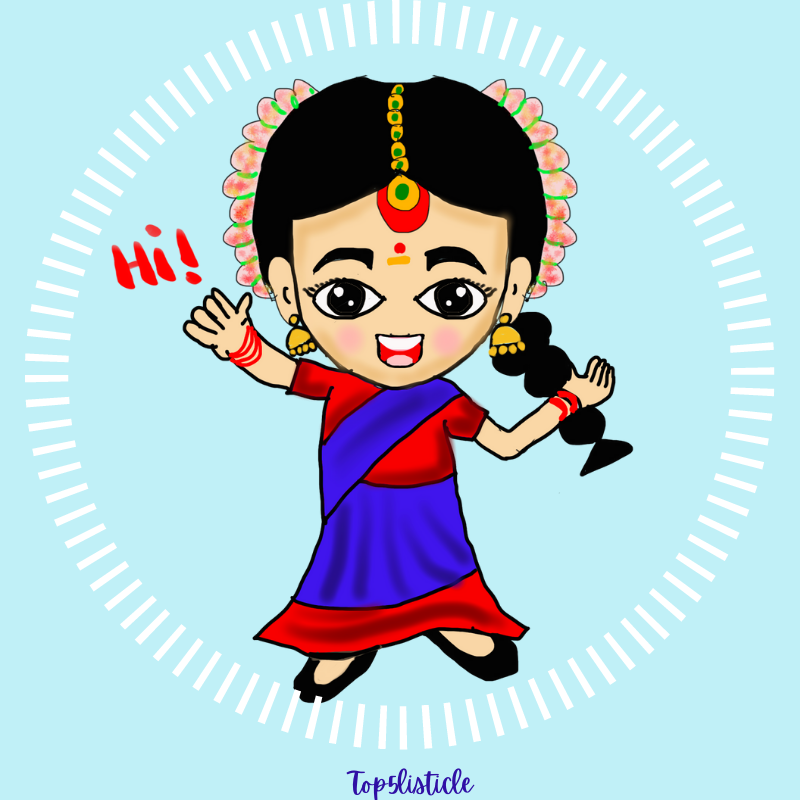
For more Health, Beauty, Fashion and Singapore related content, follow Top5listicle on Pinterest and Instagram.
Shweta Raamanujam, Founder of Top5listicle & T5L Digital
Subscribe to our Youtube Channel for DIY health and beauty videos!
Wish to get featured in our listicles?
Work with us(Award Winning Website) and improve your brand’s presence through our Digital Marketing and Influencer Marketing Expertise.
Check our portfolio here!
Recommended Articles
- Cetaphil Gentle Skin Cleanser Review – Before and After
- 2 Best Natural Hair Dyes for Premature Gray Hair
- Best Makeup Essentials For Beginners
- Top 5 Homemade Anti-Aging Face Masks That You Need To Try
- 9 Best Natural Makeup Alternatives






It’s so pretty
Nice designs to admire
Wow love all the designs!
Love this nice design
Love the beautiful henna arts
So beautiful
My friends always do henna arts
Learnt some useful info about henna arts
Very nice job!
All so beautiful! It’s really an art
Oh wow. Looks good
Didn’t know wow many type one
The designs are so pretty!
Love the designs!
really cute designs here❤️
I love the pretty designs.
The designs are so intricate!
all of them are so beautiful
Wow amazing sharing.
Wow so many types of henna
All the design is nice and unique
Loely designs and great information!
Love the designs! So pretty!
Great designs and useful information!
Wow many pretty designs..
This is oh so nice lo
Wow so many types!
such a complete mehndi designs collections… truly artistic…
such a lovely collection of mehndi designs. looks so artistic..
What a creative henna design
I tried this during Deepavali!!
Good write up
So artsy! I am really in awe of henna art works